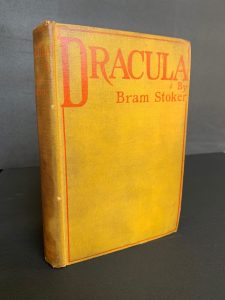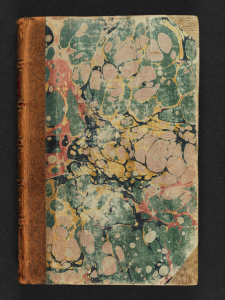In Bram Stoker’s genre-defining novel Dracula, after a series of sleepwalking episodes leaves Lucy Westenra mysteriously exsanguinated, her friend and jilted suitor, John Sewell, consults his former medical teacher, Abraham Van Helsing, to find a cure for Lucy’s anemia. “She wants blood, and blood she must have or die” (123-24)–these words, muttered by Van Helsing as he tries to save his dying patient, catapult readers out of gothic vampire fiction and into 19th-century medical reality.

Transfusions in Stoker’s time weren’t completely uncommon. James Blundell, an English obstetrician, performed many of the first successful human-to-human transfusions in the early 19th century, but he often found that many of his patients “suffered fever, backache, headache and passed dark urine”–all signs of blood incompatibility. First published in 1897, Dracula predates physician Karl Landsteiner’s discovery of blood type cross-matching by several years, and, like the contemporary science the novel immortalizes in its pages, it never mentions whether the four transfusions Lucy receives are compatible ones. Instead, Stoker tells his readers that it is male vitality that continues to rouse her: “You are a man and it is a man we want” (123).
Stoker owes a great deal to Blundell’s language, whose report in an 1829 issue of the Lancet established the idea of transfusion as “life-giving”: “…the patient expresses herself very strongly on the benefits resulting from the injection of the blood; her observations are equivalent to this—that she felt as if life were infused into her body.”

British physician Charles Egerton Jennings also wrote on transfusion’s “life-giving” properties. In his book Transfusion, a short work on the process’s history and “modes of application,” Jennings advocates for the continued use of and experimentation with transfusions. He saw their application as a vital component to contemporary medical treatment, especially obstetrics, and believed they were necessary to save at-risk parturient women. Complications during childbirth were common well into 19th-century Britain, and severe hemorrhages, while less frequent than in the past, were not unusual. Jennings’s short treatise offers hopeful solutions to the country doctor, providing him with new tactics and a patent for new transfusion siphons that are ideally safer and easier to transport.

Today, we read Dracula and find the idea of transfusion probable, even banal. However, in 1897, when the novel was published, transfusion was an experimental process rife with dangerous complications. Air could easily find its way in transfusion equipment and cause fatal embolisms, blood could coagulate and clot siphons, and the equipment itself was often difficult to transport and rarely available for emergency transfusions in country homes outside the universities and hospitals of major cities, like London. That Van Helsing risks the operation reinforces his position as an eccentric and experimental physician, and highlights the novel’s attention to the conflict between modern science and the folkloric horrors its theories cannot account for.
A first edition printing of Bram Stoker’s Dracula and an early printing of Charles Egerton Jennings’s Transfusion will be on display in the Fearrington Reading Room at Wilson Special Collections Library as part of RBC’s Hallowzine event. Please join us on Thursday, October 31, from 3:00-4:30 pm for more spooky books, zine-making fun, and a book-themed costume contest with a generous prize for best costume!


